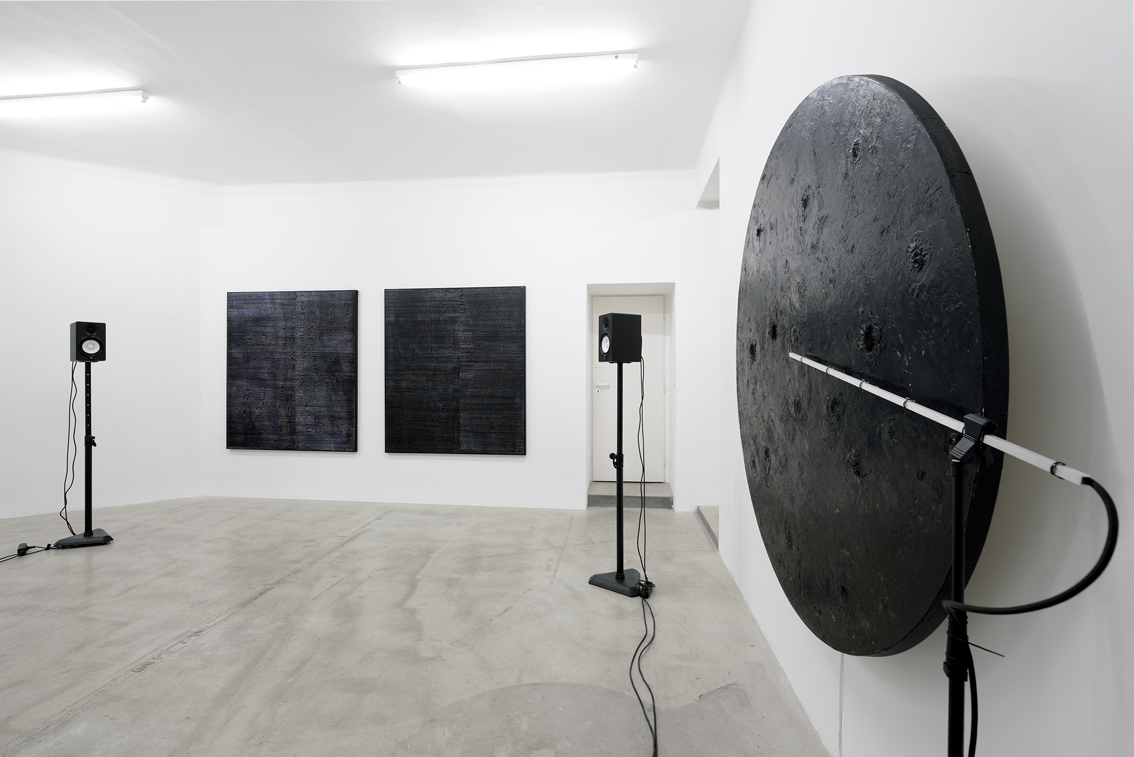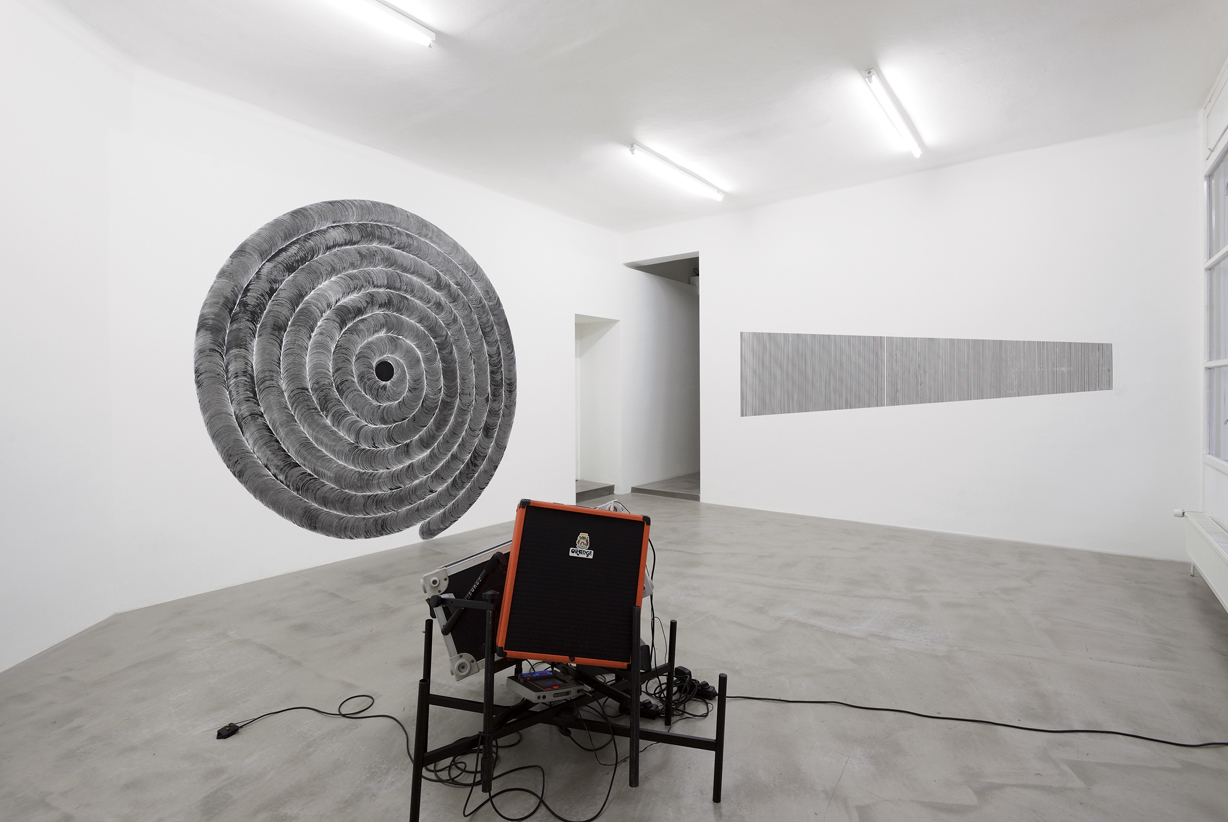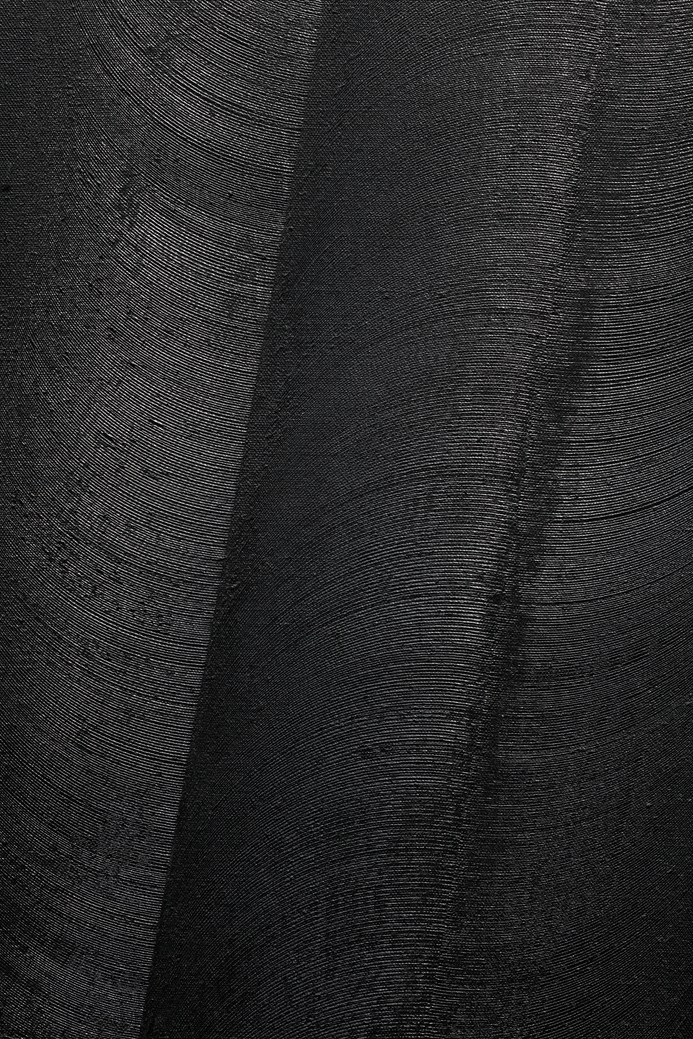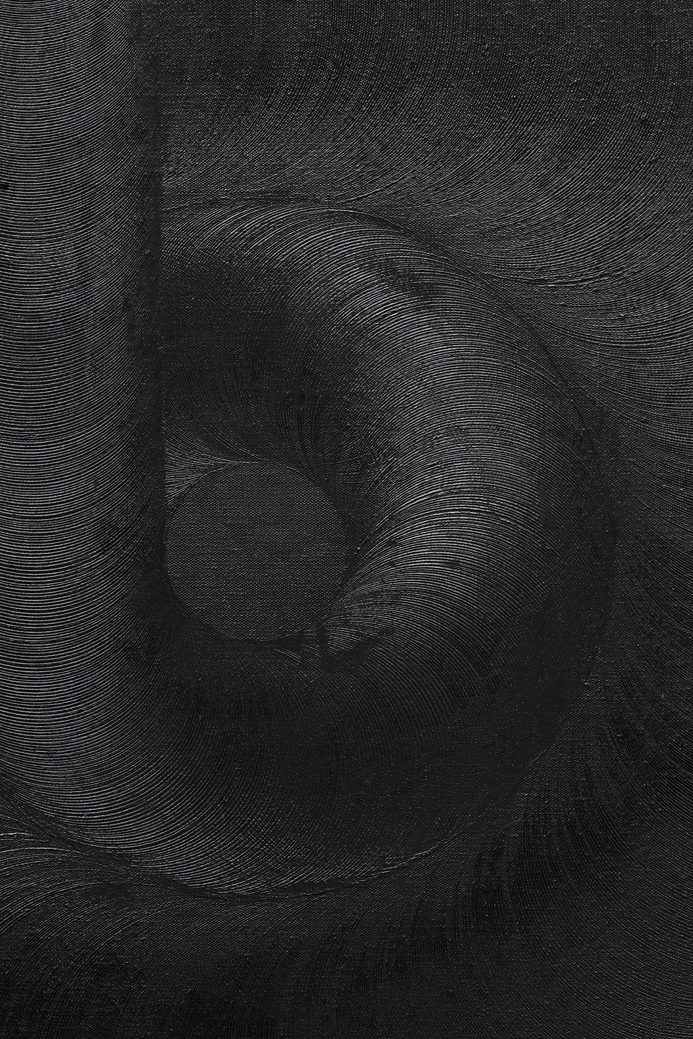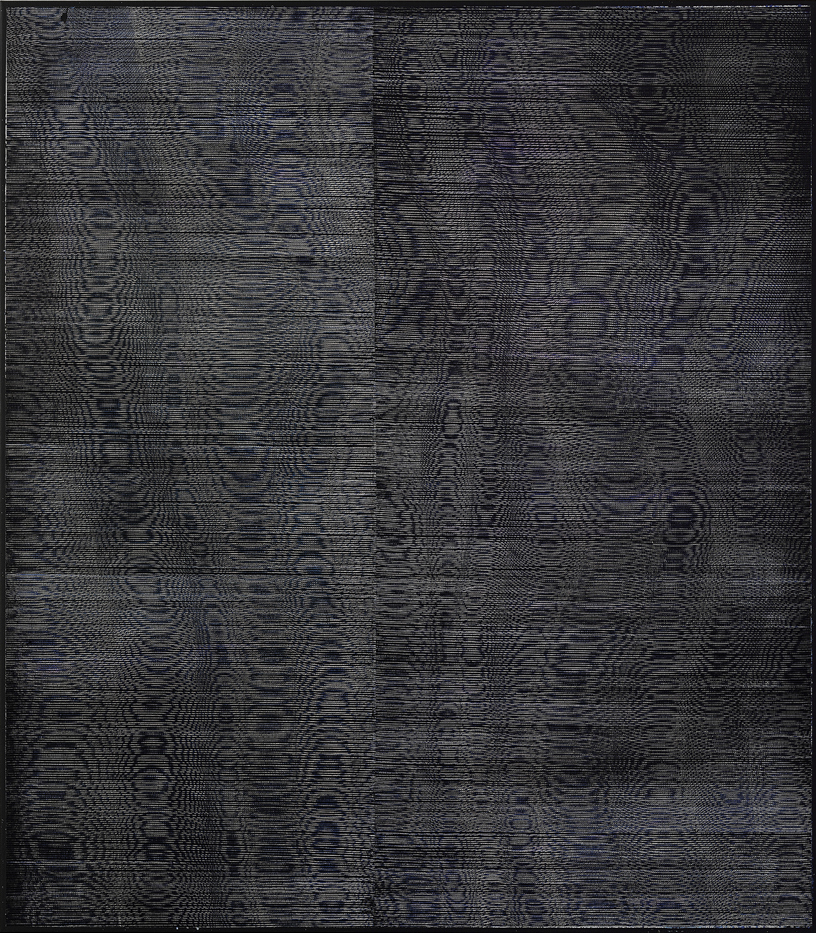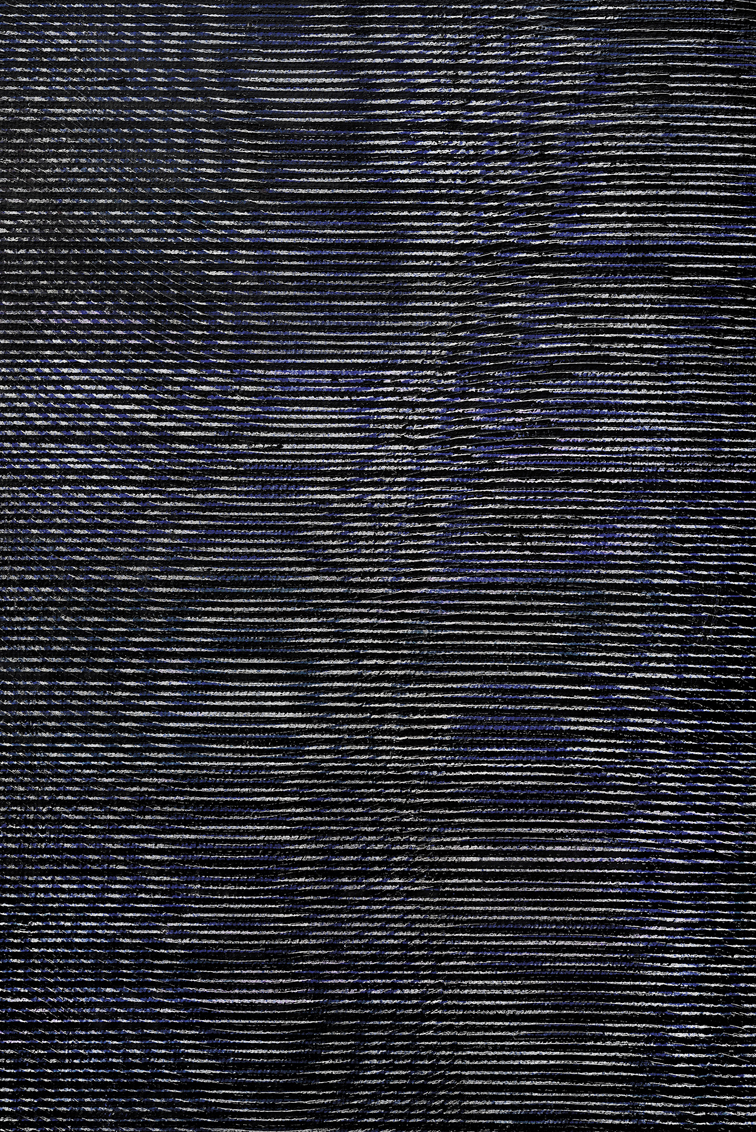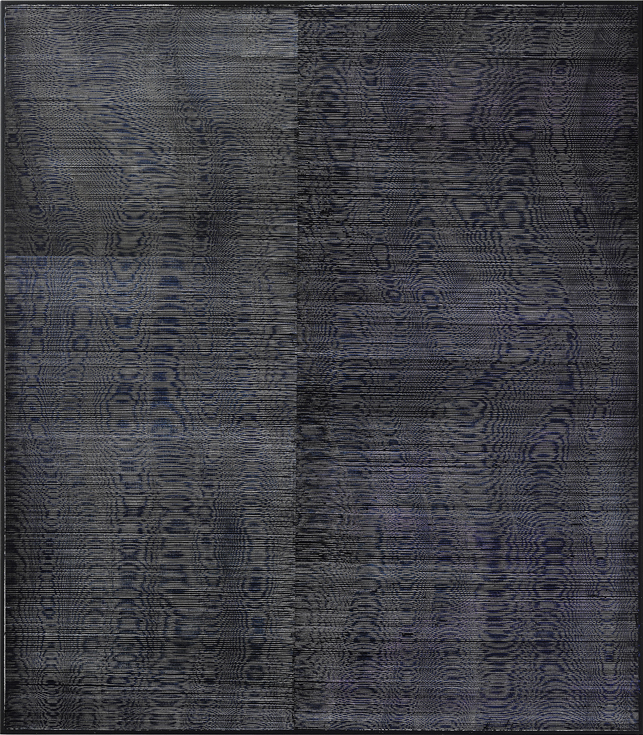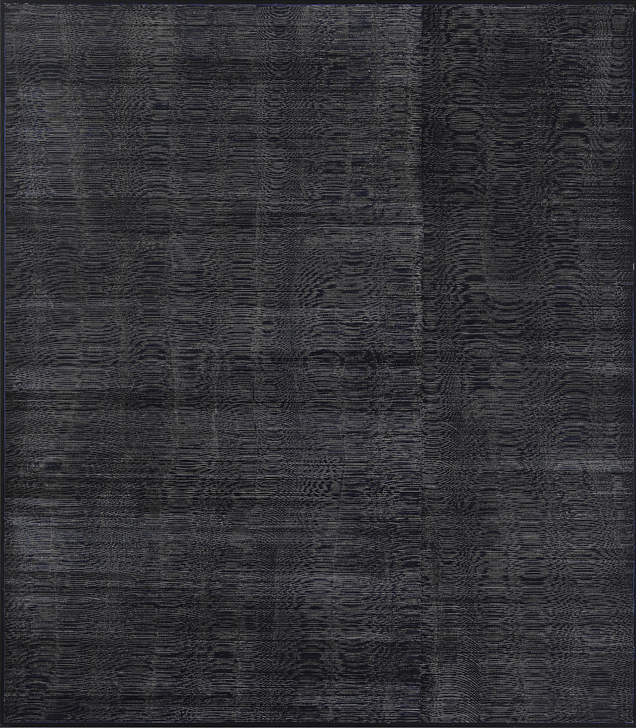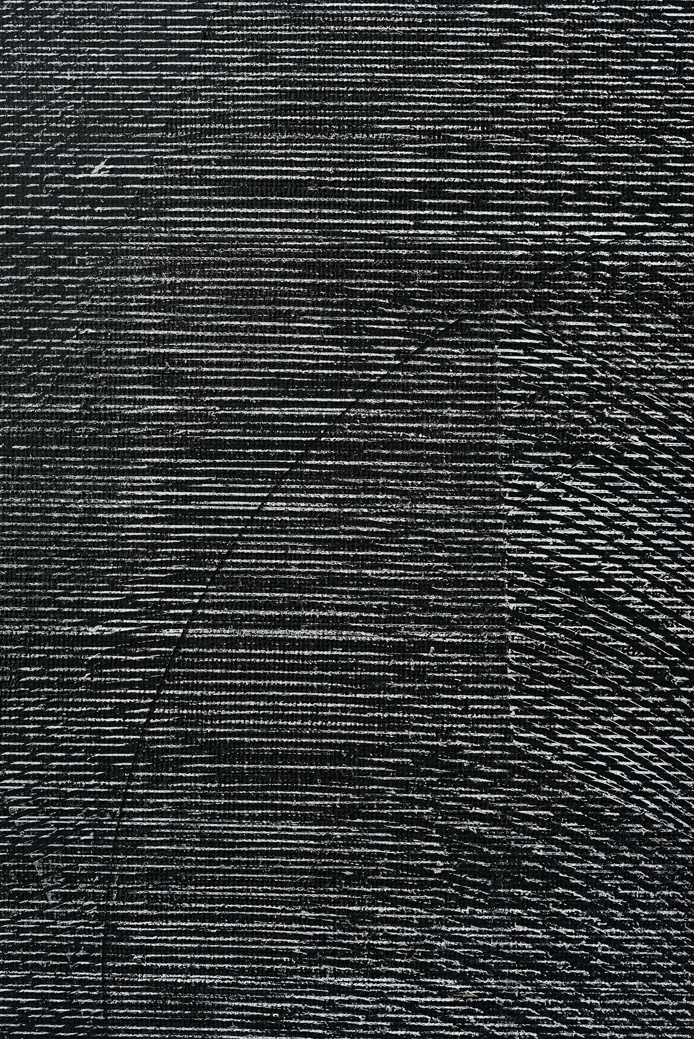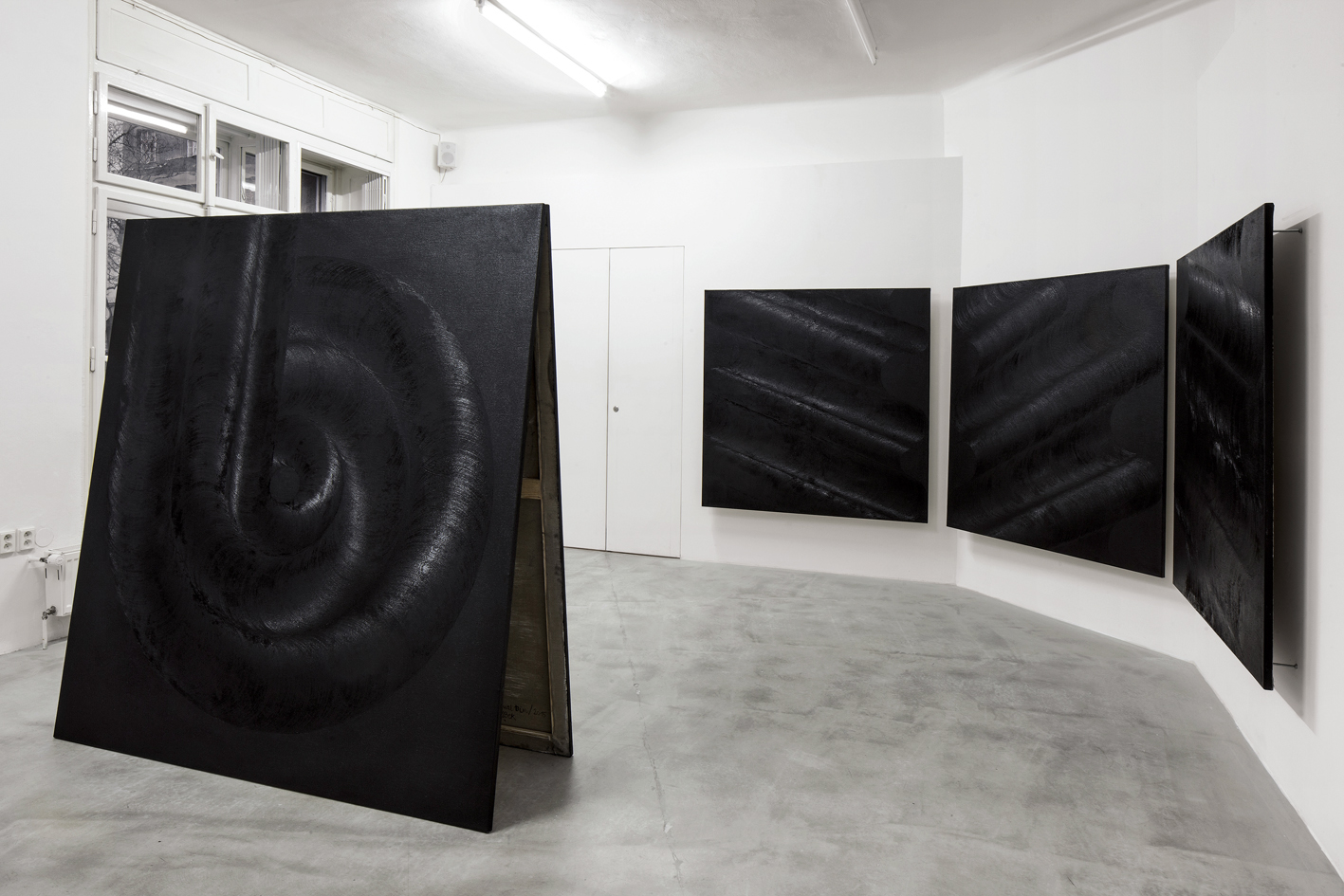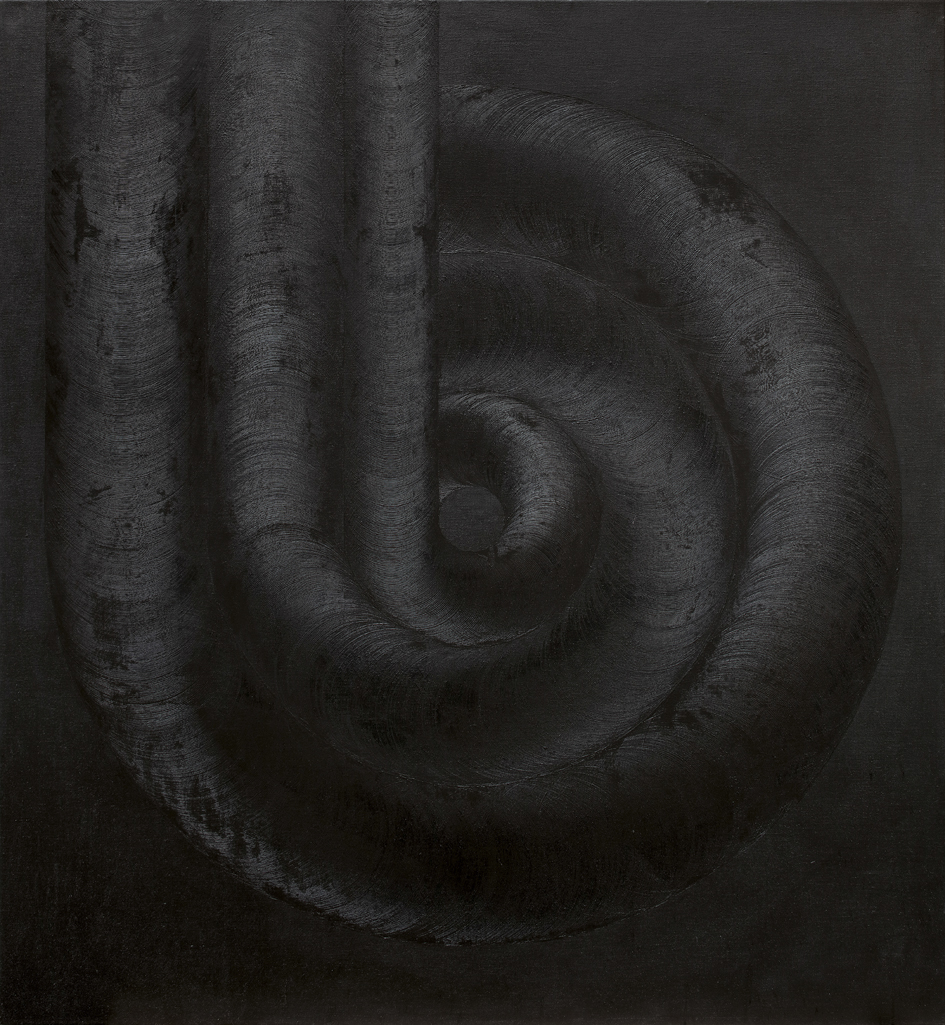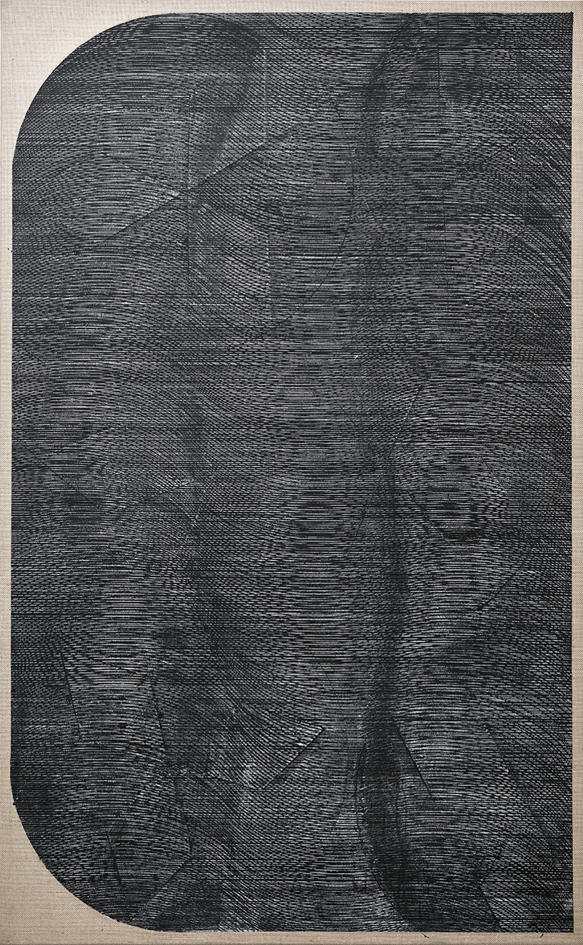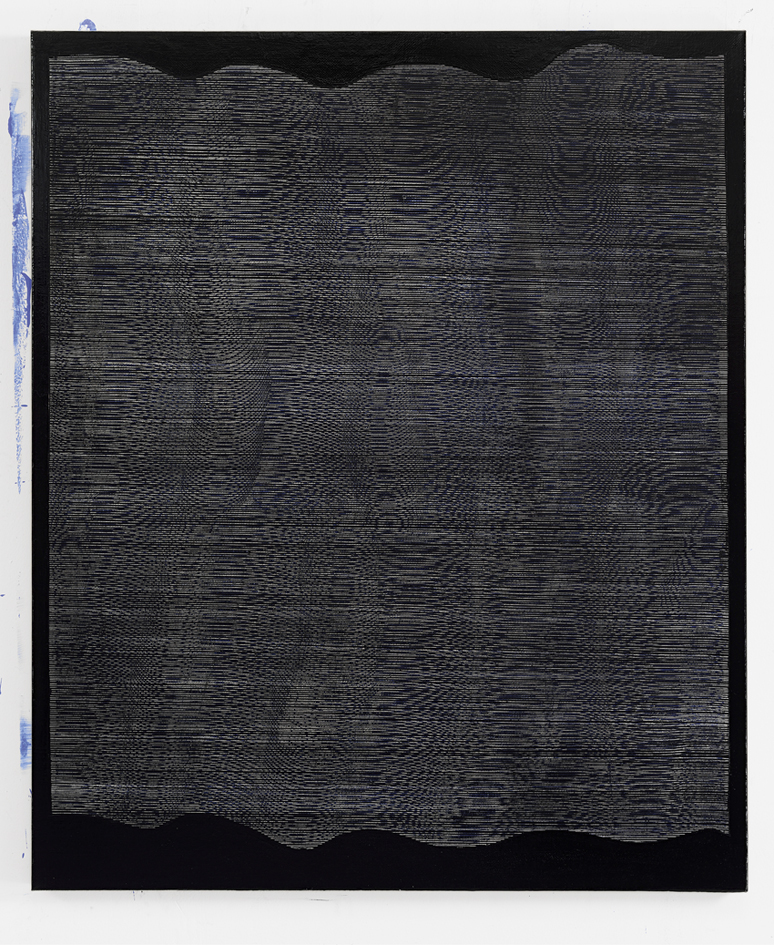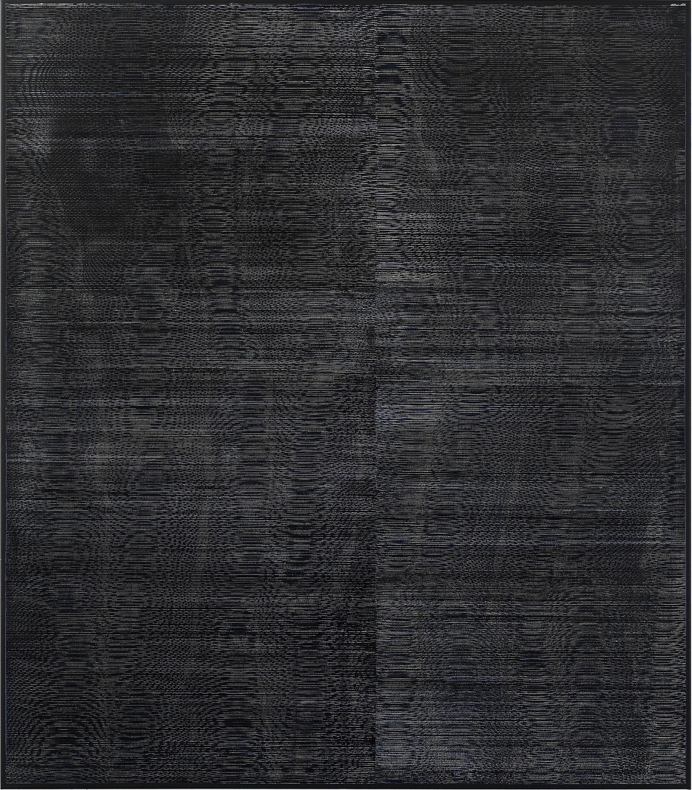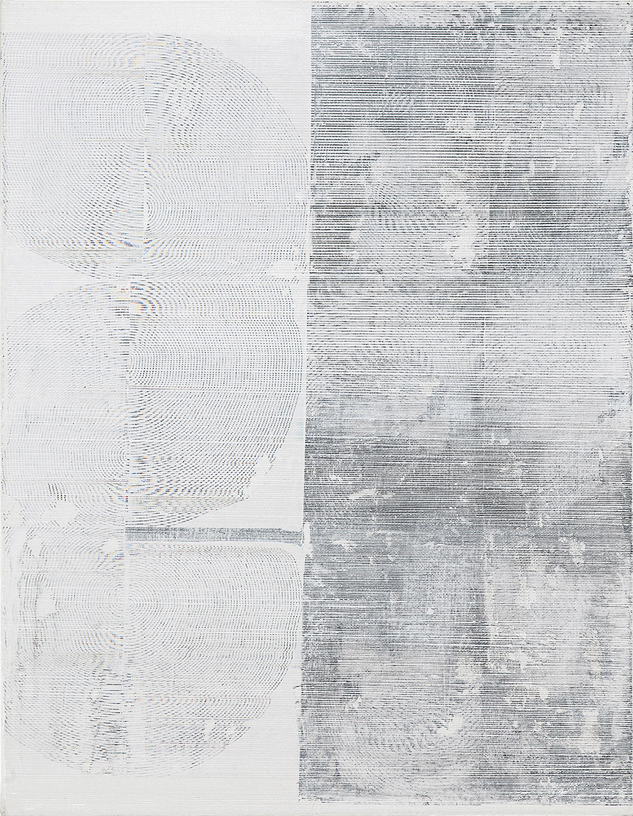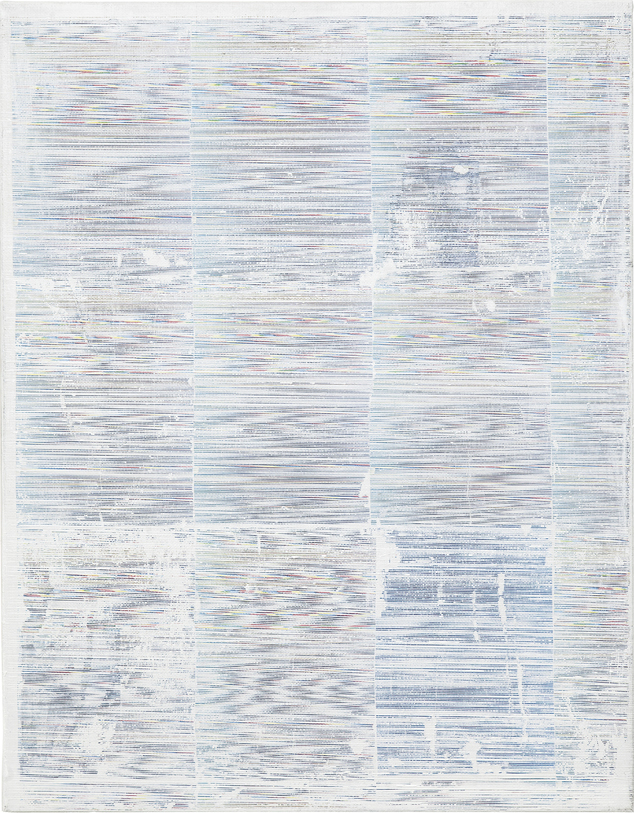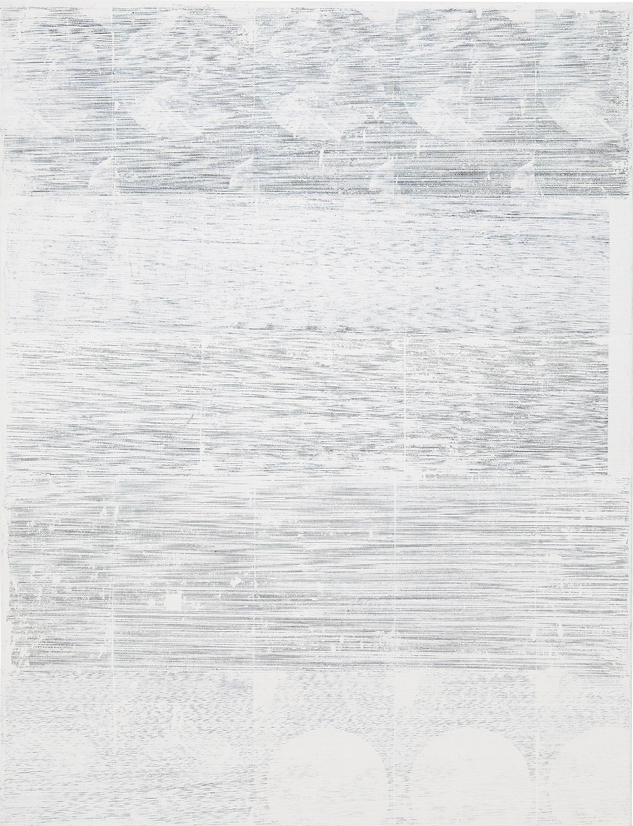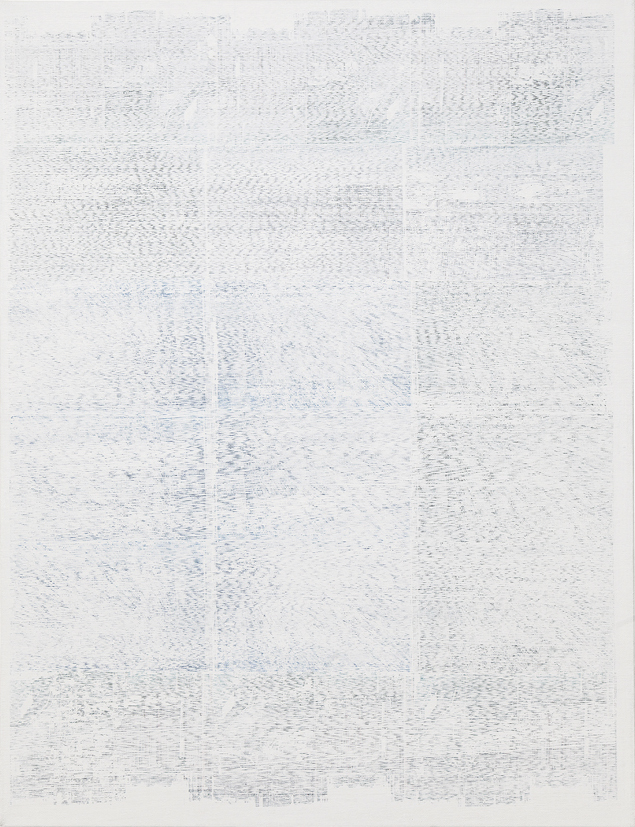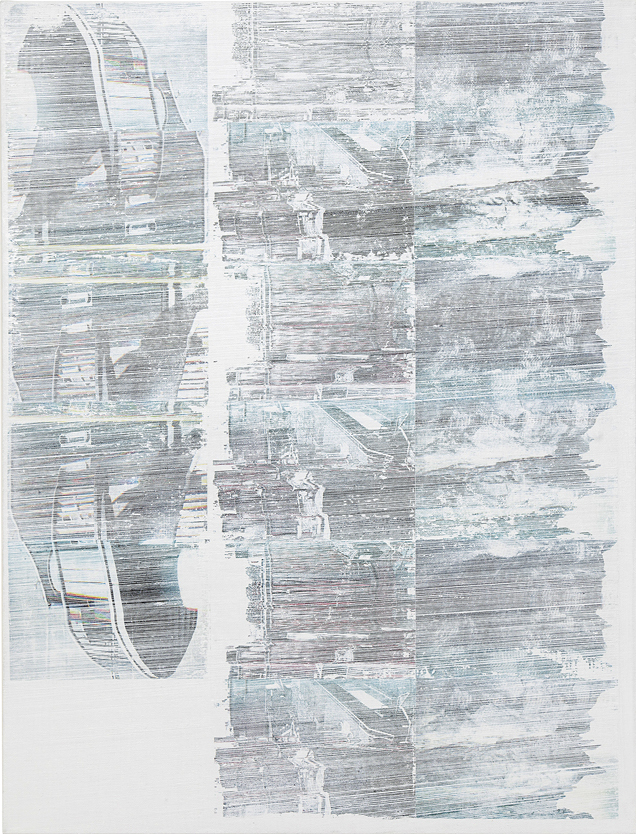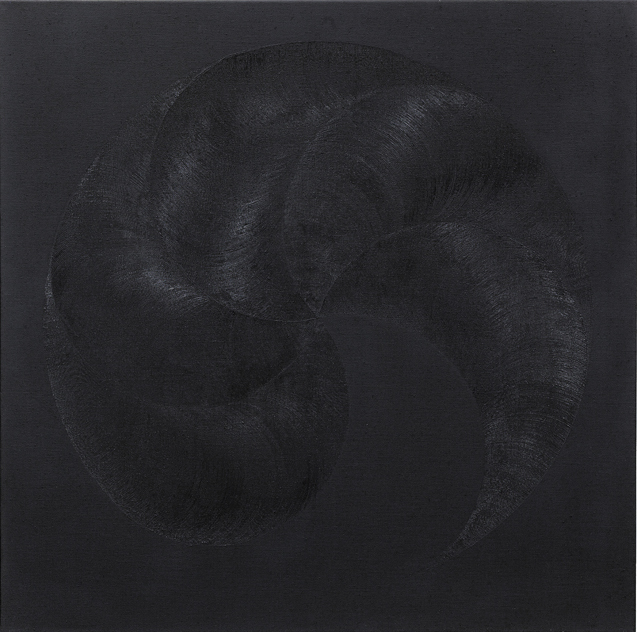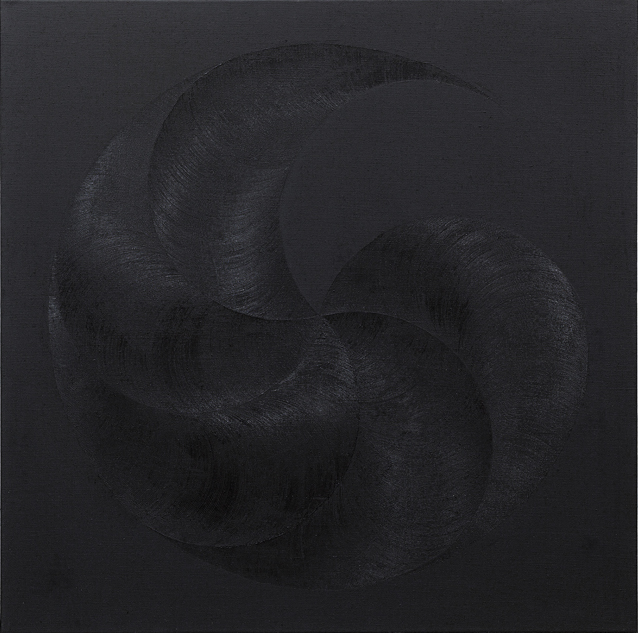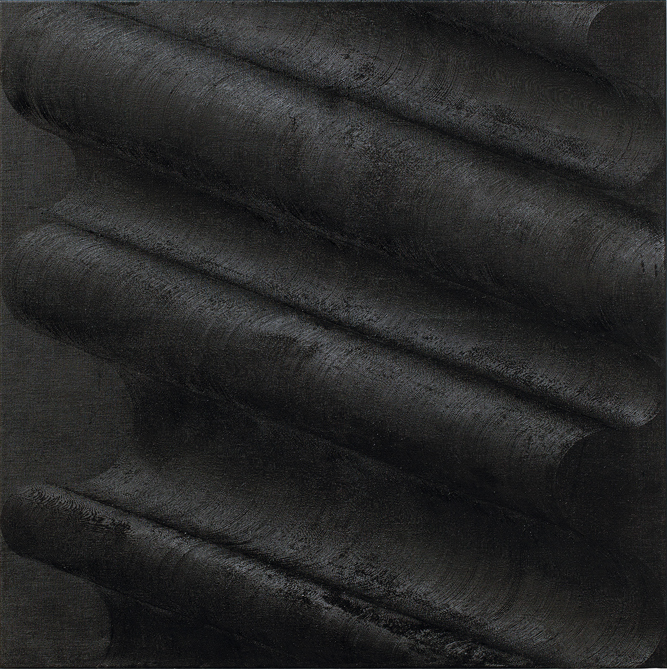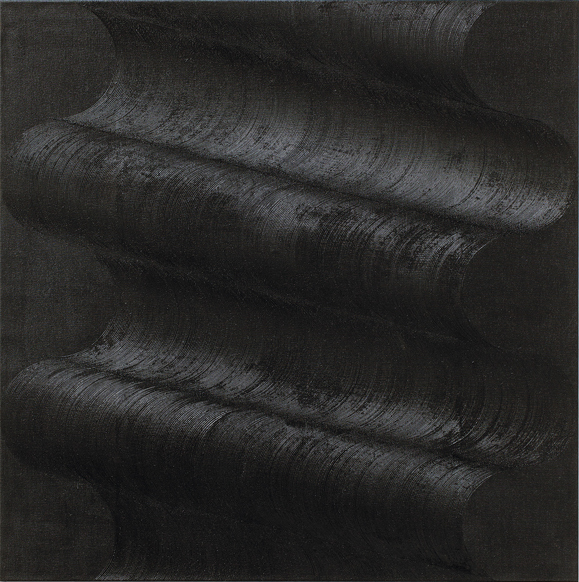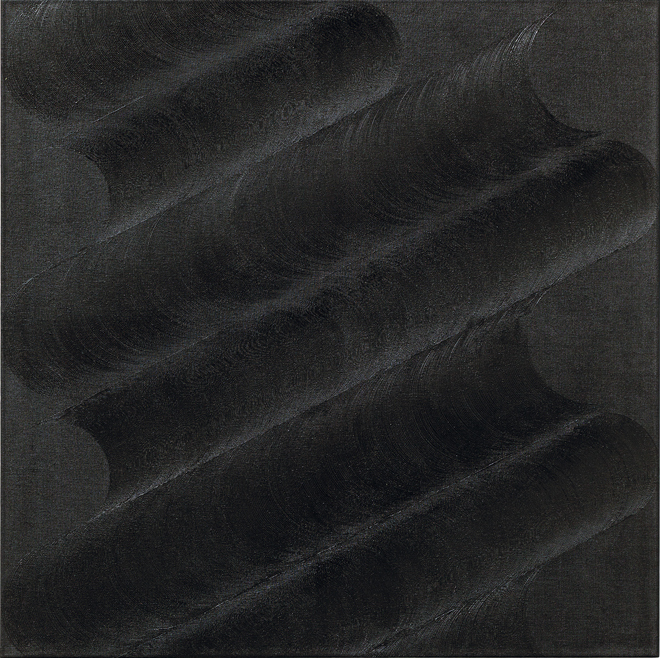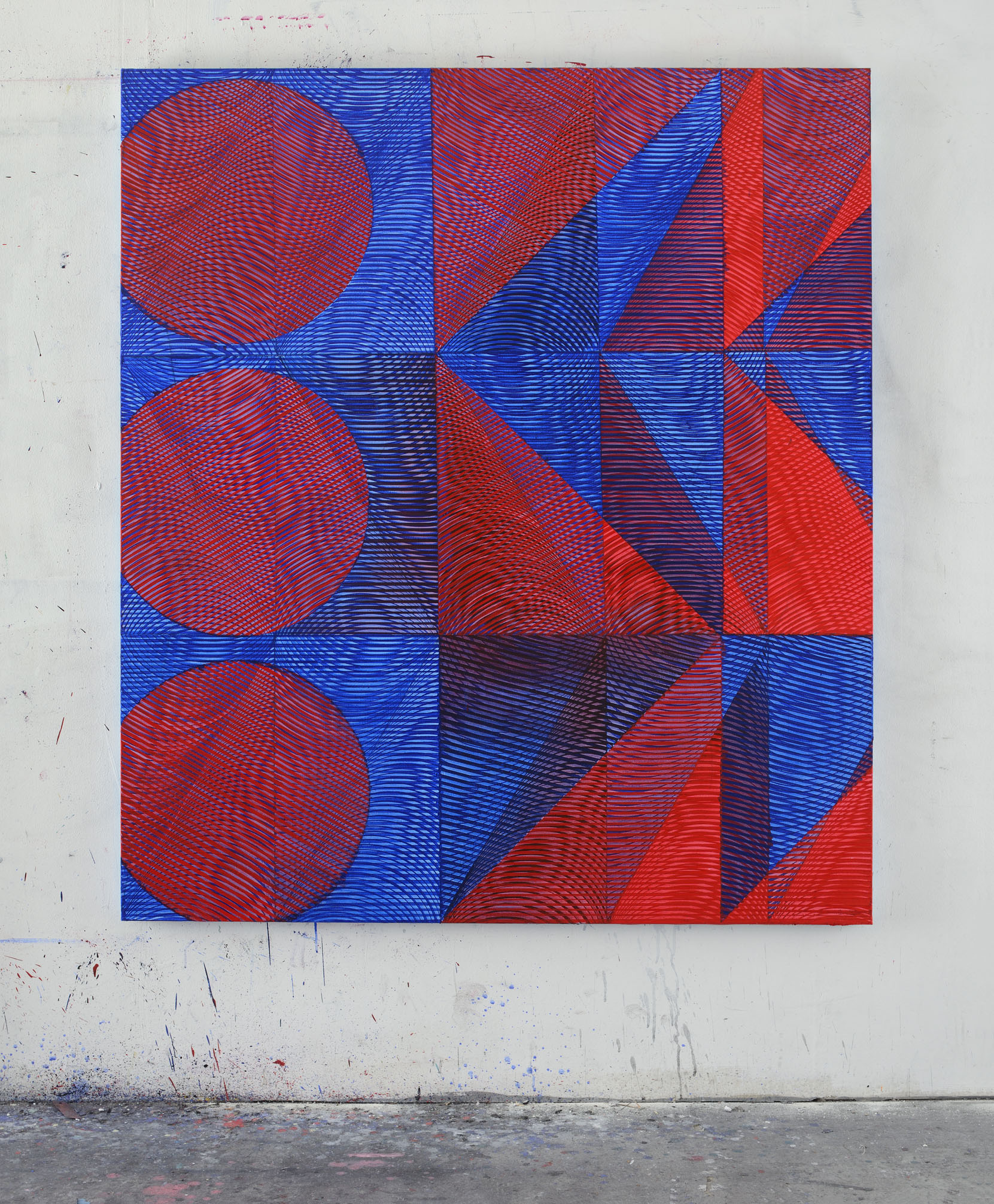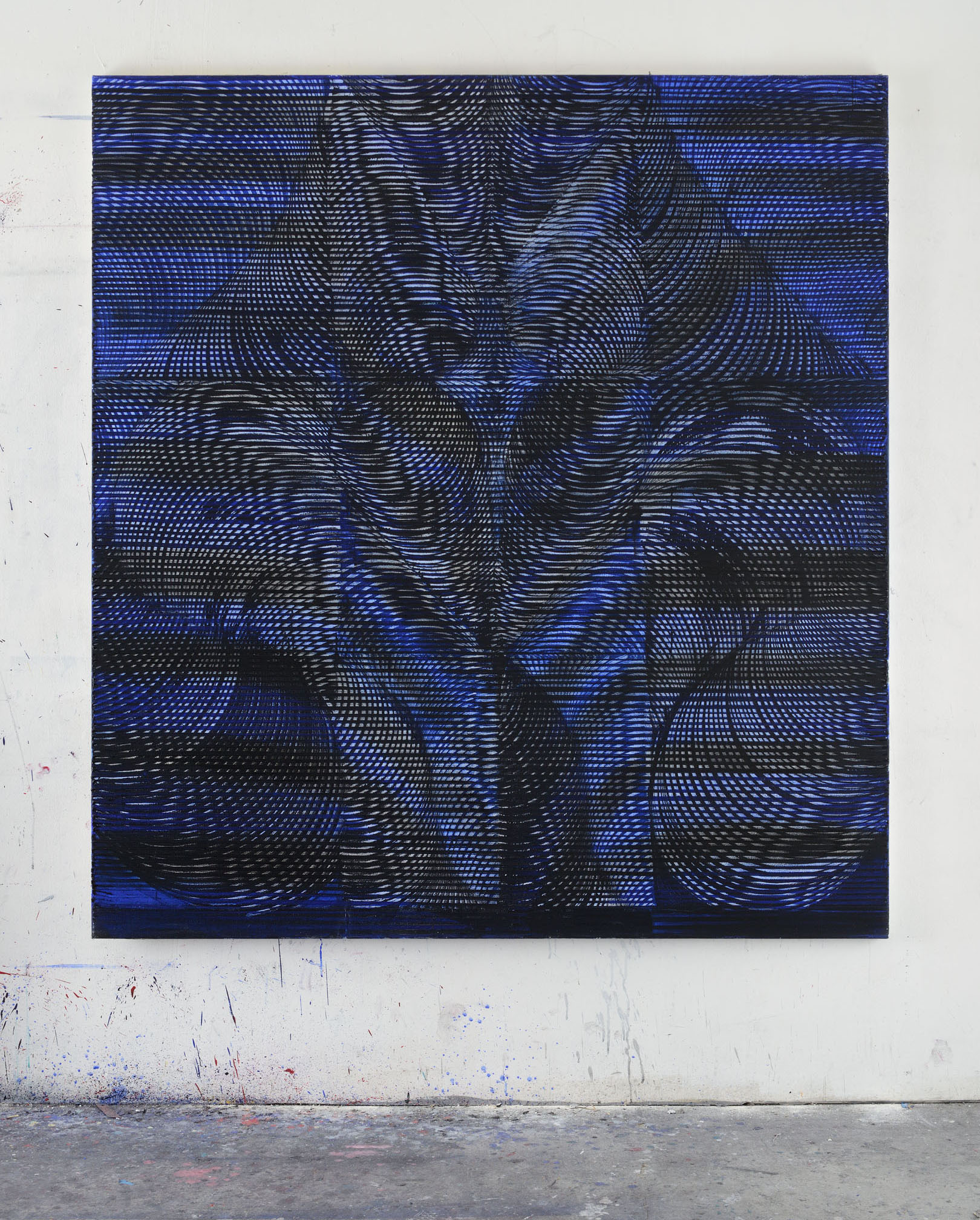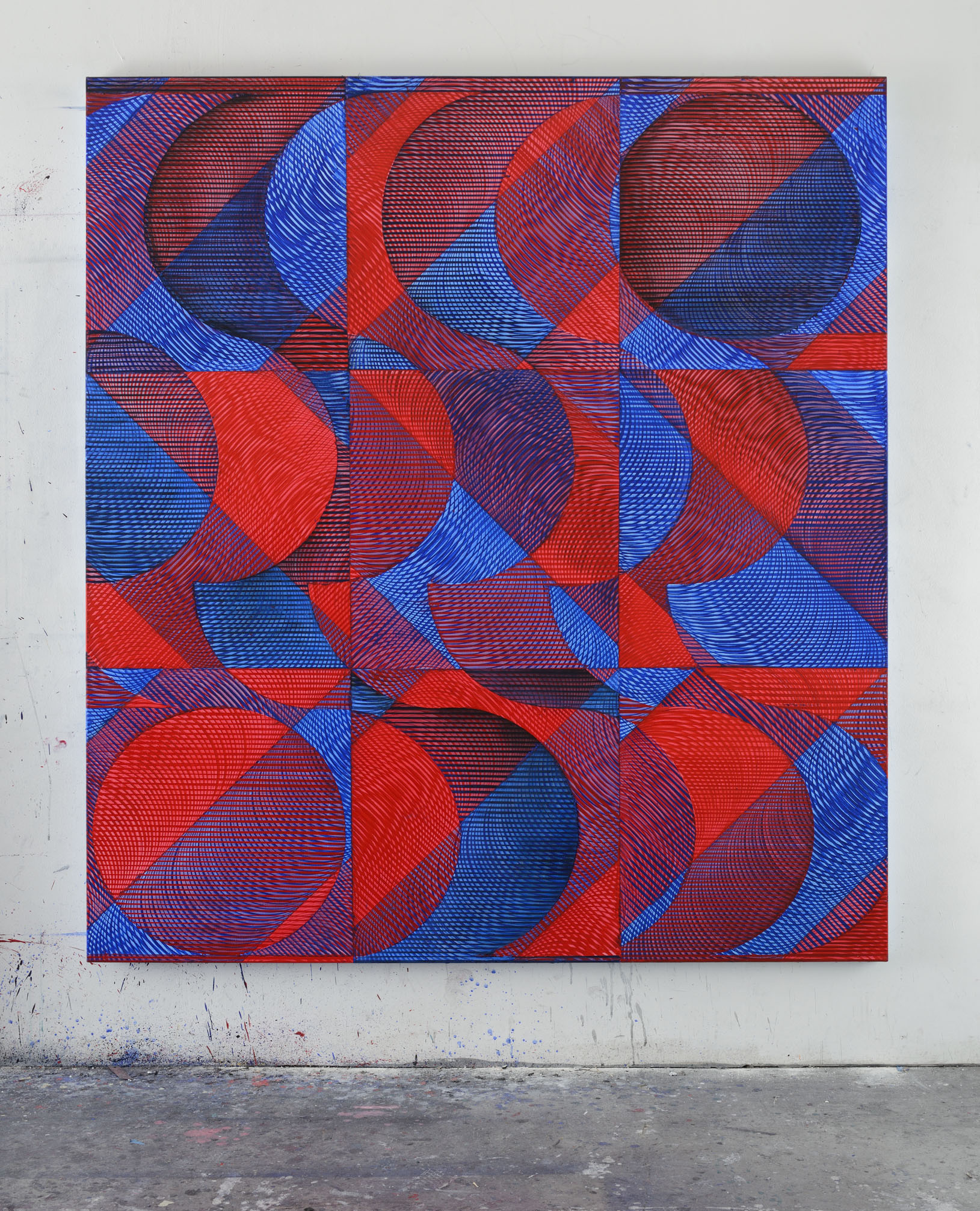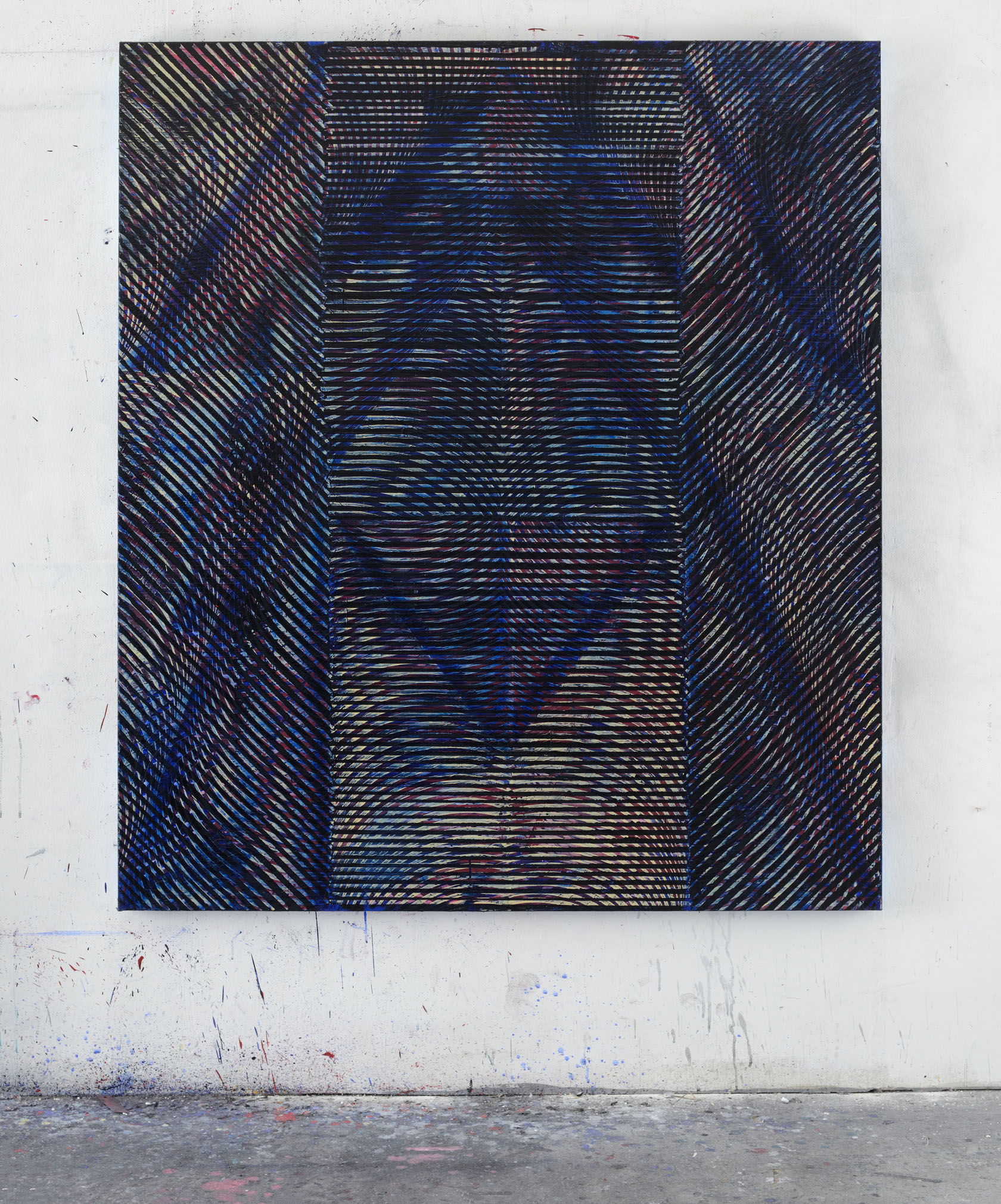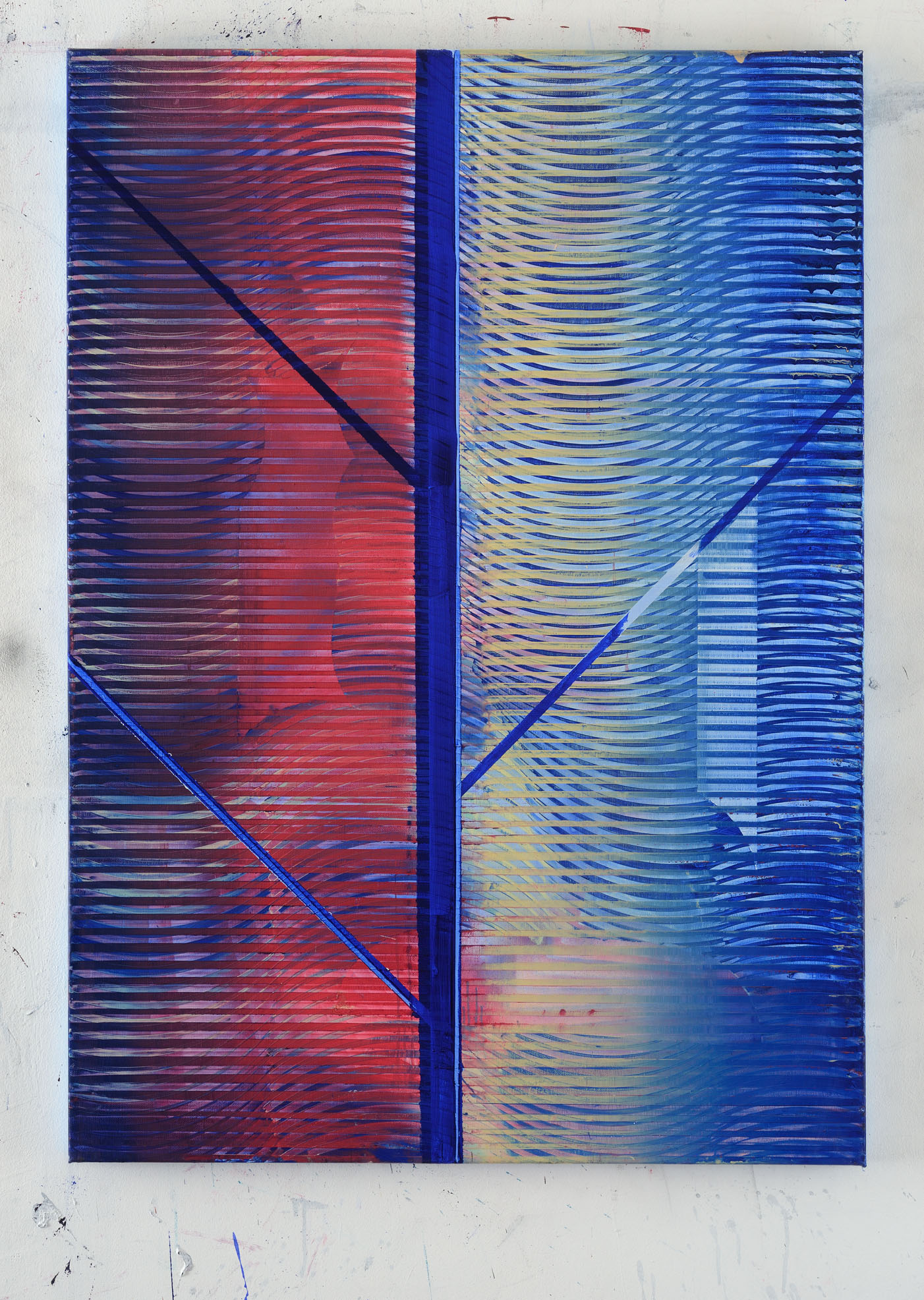Daniel Vlček’s Hauntological Practice
by Emily McDermott
“Not seeing anything intelligible is the new normal,” Hito Steyerl writes in “A Sea of Data: Apophenia and Pattern (Mis-)Recognition.” “Information is passed on as a set of signals that cannot be picked up by human senses.” The desire to understand the world around us, however, is an inherent part of human nature: the human wants to pick up these signals, wants to decode the surrounding bytes of information. Despite this, societies have always placed trust in that which cannot be seen (in gods, in religions, in technologies) and produced speculative images thereof, only to further cement their beliefs. It is this unending tension between the invisible and visible, the digital and the analogue, that Daniel Vlček addresses in his abstract paintings and electronic soundscapes.
During the last five years, the Czech artist has created a multifaceted body of work that includes paintings, sound, and installations comprising pieces of fabric and readymade objects. Obvious themes have been the birth of techno music alongside Fordism and the automobile industry, as well as the use of psychedelic drugs—but no matter the poignancy of these motifs, they are often disguised behind layers of paint. First, Vlček’s canvases are coated with acrylic and left to dry. He then paints atop the acrylic with oil and, while the paint is still wet, uses a pressed vinyl or part of a car tire, such as a rubber-coated steel loop or PVC template, as a stencil to carve out meticulous yet instinctual, abstract and often geometric patterns, revealing the layer(s) of paint below. The result is usually a moiré effect, a disorienting black and white configuration, at times imbued with hints of dark purples, blues and greens. From these, he creates soundscapes that are auditory interpretations of his visual output. Much like the resulting soundtracks for exhibitions, there is a soundtrack to this book.
In his abstractions, one might perceive what seems to be some kind of animal, household object or even fictional monster, but this is the result of apophenia, defined by Merriam-Webster as “the tendency to perceive a connection or meaningful pattern between unrelated or random things (such as objects or ideas).” This phenomenon is both why we see faces in the clouds and why many conspiracy theories exist: our minds create something from what is supposedly nothing. A similar operation unfolds in the digital realm, Steyerl explains, with researchers at Google deeming “the act of [a machine] creating a pattern or an image from nothing but noise ‘inceptionism’ or ‘deep dreaming.’” However, she continues, “these entities are far from mere hallucinations. If they are dreams, those dreams can be interpreted as condensations or displacements of the current technological disposition.” Synthesizing these issues, Vlček’s work can be read as a distillation of his personal disposition toward technology, or rather his struggle therewith. When robotically tracing line after line after line after line into layers of paint, he enters into a state of deep meditation, or deep dreaming, creating a pattern from nothing more than the noise around and within him. The repetition has a transcendental effect; his mind leaves his body, his cognitive functioning displaced from his physicality. He admits that a robot could make his paintings, that a bionic arm would even ease his incessant shoulder pain, but in becoming one with the machine or by simply accepting its help, he would lose the thing which he most enjoys, as well as the thing which makes his works unique: the human ritual of making.
Steyerl further writes that inceptionsim “is a document of an era that trains smartphones to identify kittens, thus hardwiring truly terrifying jargons of cutesy into the means of production,” but in his practice, Vlček reverses this notion: the means of production are used solely as such, it is our eyes and minds that have been trained otherwise. In his paintings we discern natural landscapes as well as encoded data, we see the moiré effect of our smartphone cameras obfuscating the televisions, monitors and other screens at which they’re pointed—and these various forms of apperception quickly lend themselves to philosopher Jacques Derrida’s concept of hauntology. Hauntology, derived from deconstructivism, Derrida’s idea that locating the origin of an identity or history is dependent upon a set of pre-existing conditions, suggests a temporal and ontological disjunction. In Vlček’s paintings, we are simultaneously reminded of ideas from what we deem the past, present and future; in his sounds, he uses field recordings, vintage synths and drum machines, as well as digital software, but processes the crisp finished audio through a tape recorder, thus restoring an analogue crackle. Current technology repurposes that of previous decades, and vice-versa. This disconnection, according to critic Mark Fischer, reflects electronic music’s “confrontation with a cultural impasse: the failure of the future” (16)—a type of nostalgia for a utopian future that never was.
In an exhibition space, Vlček’s all-encompassing electronic soundscapes, with their noises reminiscent of bygone eras, only further suggest the notion that there is something to be decoded within his painted abstractions. Yet no lines of code, no zeros and ones, are to be detected. Rather, Vlček’s hauntological practice is a document of a disjointed time that trains the viewer to realign their understanding thereof, to identify the confluence of the past, present and future, thus hardwiring both technological advancements and nostalgia not into the means of production but into the product itself.
Sources
Fisher, Mark. “What is Hauntology”? Film Quarterly, vol. 66, no. 1, 2012, pp. 16-24.
Steyerl, Hito. “A Sea of Data: Apophenia and Pattern (Mis-)Recognition.” e-flux Journal #72, April 2016, e-flux.com/journal/72/60480/a-sea-of-data-apophenia-and-pattern-mis-recognition/

